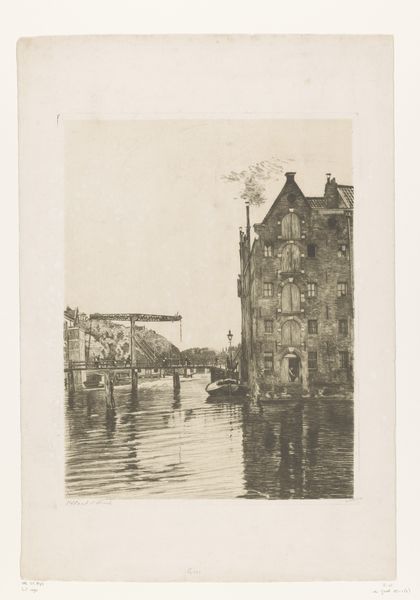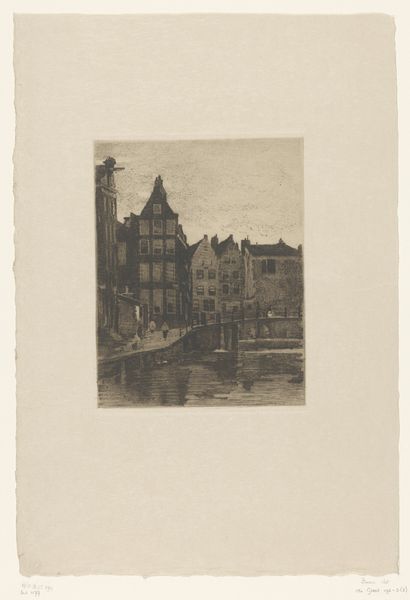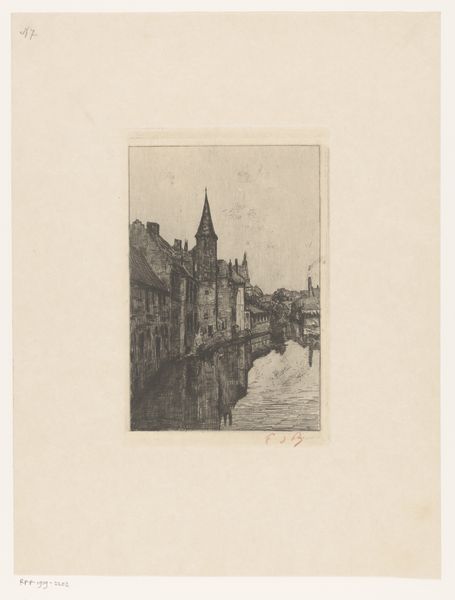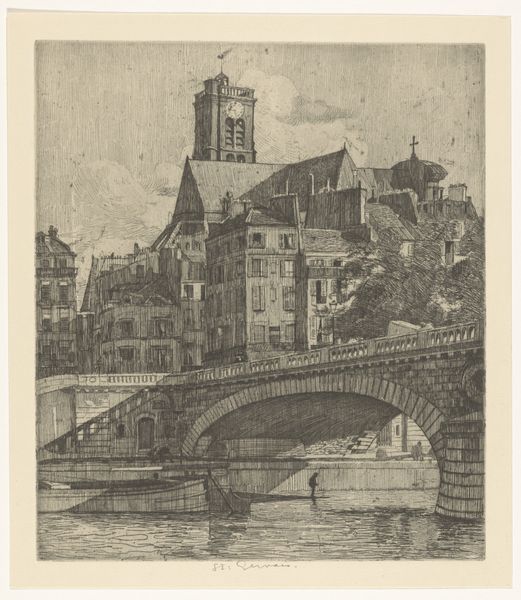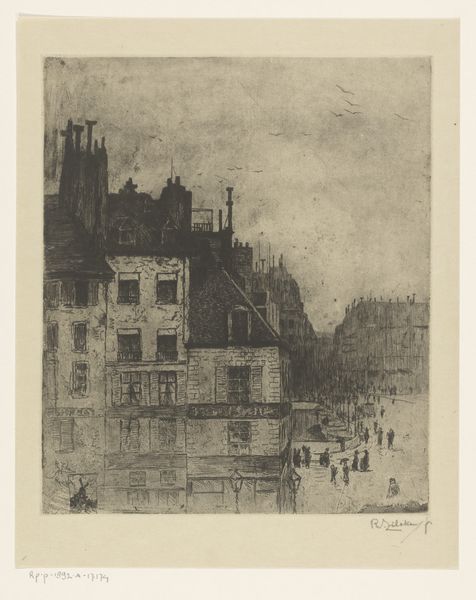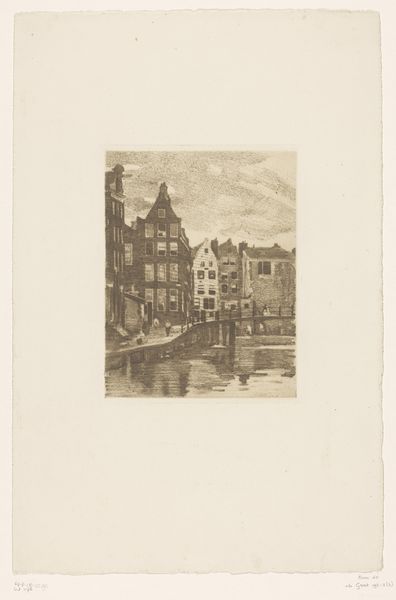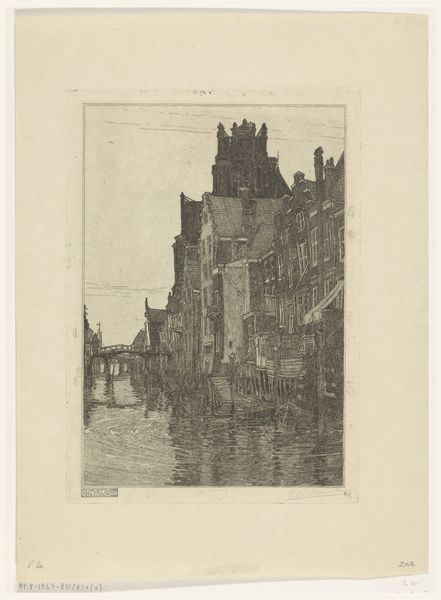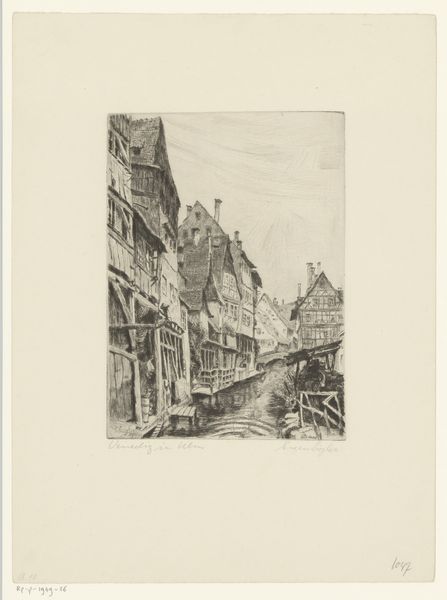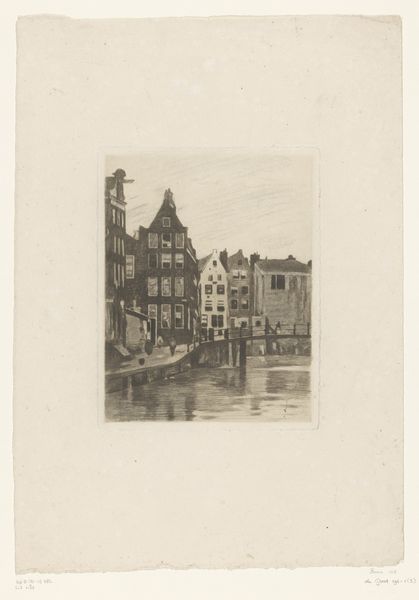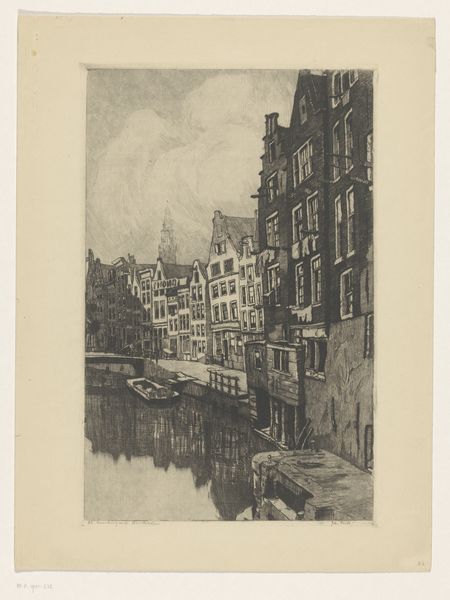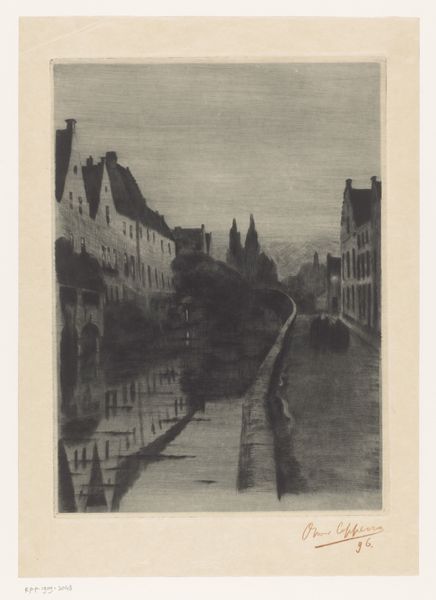
#
photo of handprinted image
#
aged paper
#
toned paper
#
light pencil work
#
pale palette
#
pale colours
#
ink paper printed
#
light coloured
#
white palette
#
watercolor
#
building
Dimensions: height 474 mm, width 395 mm
Copyright: Rijks Museum: Open Domain
Editor: So, here we have Ferdinand Eckhardt's "Nürnberg, Henkersteg," created sometime between 1886 and 1922. It looks like a watercolor, maybe with some etching, showing this rather imposing medieval bridge and tower. It has such a somber feel to it... How do you interpret this work? Curator: That somber feeling, I think, is key. Knowing the subject matter – the Henkersteg, or Hangman's Bridge – immediately reframes how we see this image. Bridges, traditionally symbols of connection, take on a much darker connotation here. How might this piece speak to us about social justice and the narratives of power embedded in historical landscapes? Editor: A place of execution... so this isn't just a picturesque view, it's a site loaded with implications. Curator: Exactly. It's a stark reminder that these idyllic-seeming European cityscapes are often built upon complex histories of oppression and punishment. Consider the figure of the executioner himself - ostracized and yet central to the maintenance of social order. This bridge isn't just connecting two points; it's a liminal space where social boundaries are enforced. What does that suggest to you about how we read landscapes today? Editor: It’s a little unnerving, realizing something so pretty could also be linked to such dark things. It challenges this idea of beauty as simple escapism. Curator: Precisely. Art can function as a critical lens. And how does Eckhardt's choice of medium and palette— the muted tones of the watercolor— impact your interpretation? Does it amplify or soften the unsettling undercurrent of the subject matter? Editor: I guess it makes the scene seem more distant, almost like a memory fading away. Curator: Perhaps the artist is reminding us that even as time passes, we cannot, and should not, forget these histories. What's one thing you'll take away from this discussion? Editor: To dig a bit deeper. Landscapes carry histories that change the way we see them, and ourselves.
Comments
No comments
Be the first to comment and join the conversation on the ultimate creative platform.
